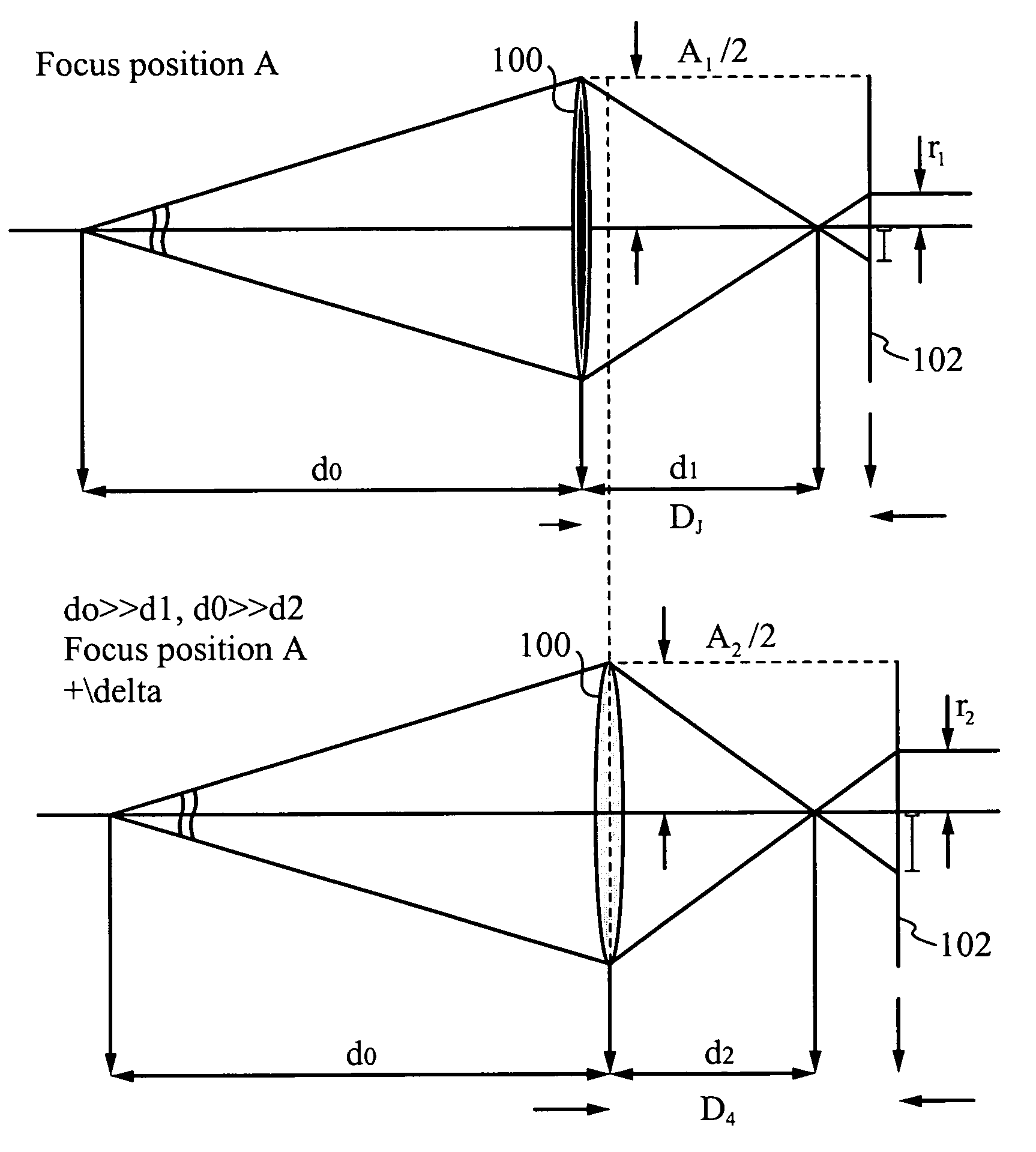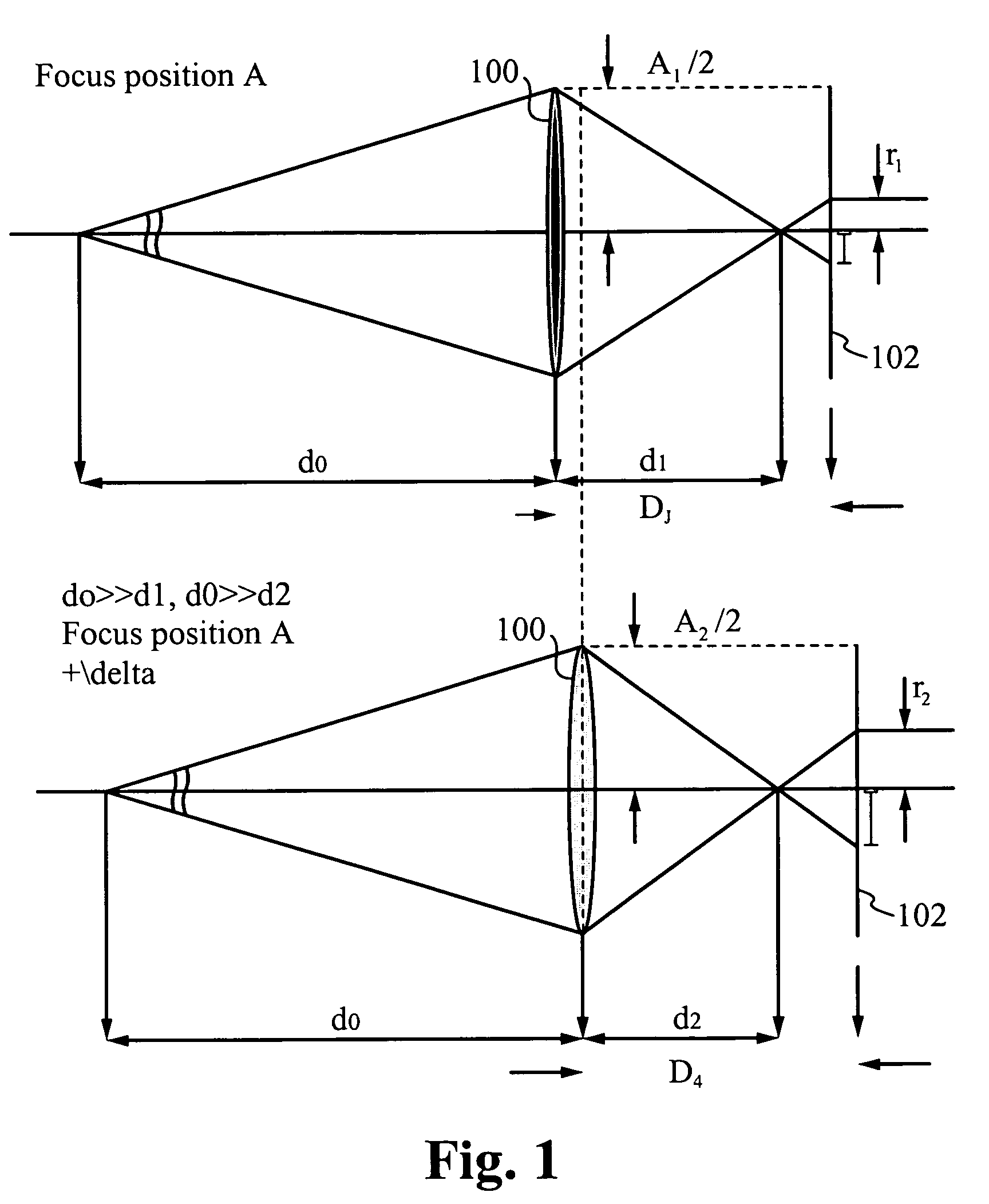Method of and apparatus for generating a depth map utilized in autofocusing
a depth map and autofocus technology, applied in the field of imaging, can solve the problems of inability to use methods, inability to compute two-dimensional fourier transforms of recorded images, and inability to use cameras and methods
- Summary
- Abstract
- Description
- Claims
- Application Information
AI Technical Summary
Benefits of technology
Problems solved by technology
Method used
Image
Examples
Embodiment Construction
[0022]A method of and an apparatus for determining a depth map are described herein. The depth information is acquired by moving a lens a short distance and acquiring multiple pictures with different blur quantities or functions. A more accurate gaussian blur implementation, in addition to a non-linear version of the blur difference allow a better determination of the depth map. By telescoping between the two blurred functions using the gaussian blur implementation, a depth map is determined. In the ideal optical scenario, the two functions are pillbox blur functions.
[0023]FIG. 1 illustrates an example of a lens 100 in a first position and in a second position to generate two images with different blur quantities on a sensor 102. With the lens 100 in focus position A, the distance from a scene (not shown) to the lens 100 is the distance d0 and the distance between the lens and the focal point is the distance d1, where the distance d0 is much greater than the distance d1. The distanc...
PUM
 Login to View More
Login to View More Abstract
Description
Claims
Application Information
 Login to View More
Login to View More - R&D
- Intellectual Property
- Life Sciences
- Materials
- Tech Scout
- Unparalleled Data Quality
- Higher Quality Content
- 60% Fewer Hallucinations
Browse by: Latest US Patents, China's latest patents, Technical Efficacy Thesaurus, Application Domain, Technology Topic, Popular Technical Reports.
© 2025 PatSnap. All rights reserved.Legal|Privacy policy|Modern Slavery Act Transparency Statement|Sitemap|About US| Contact US: help@patsnap.com



